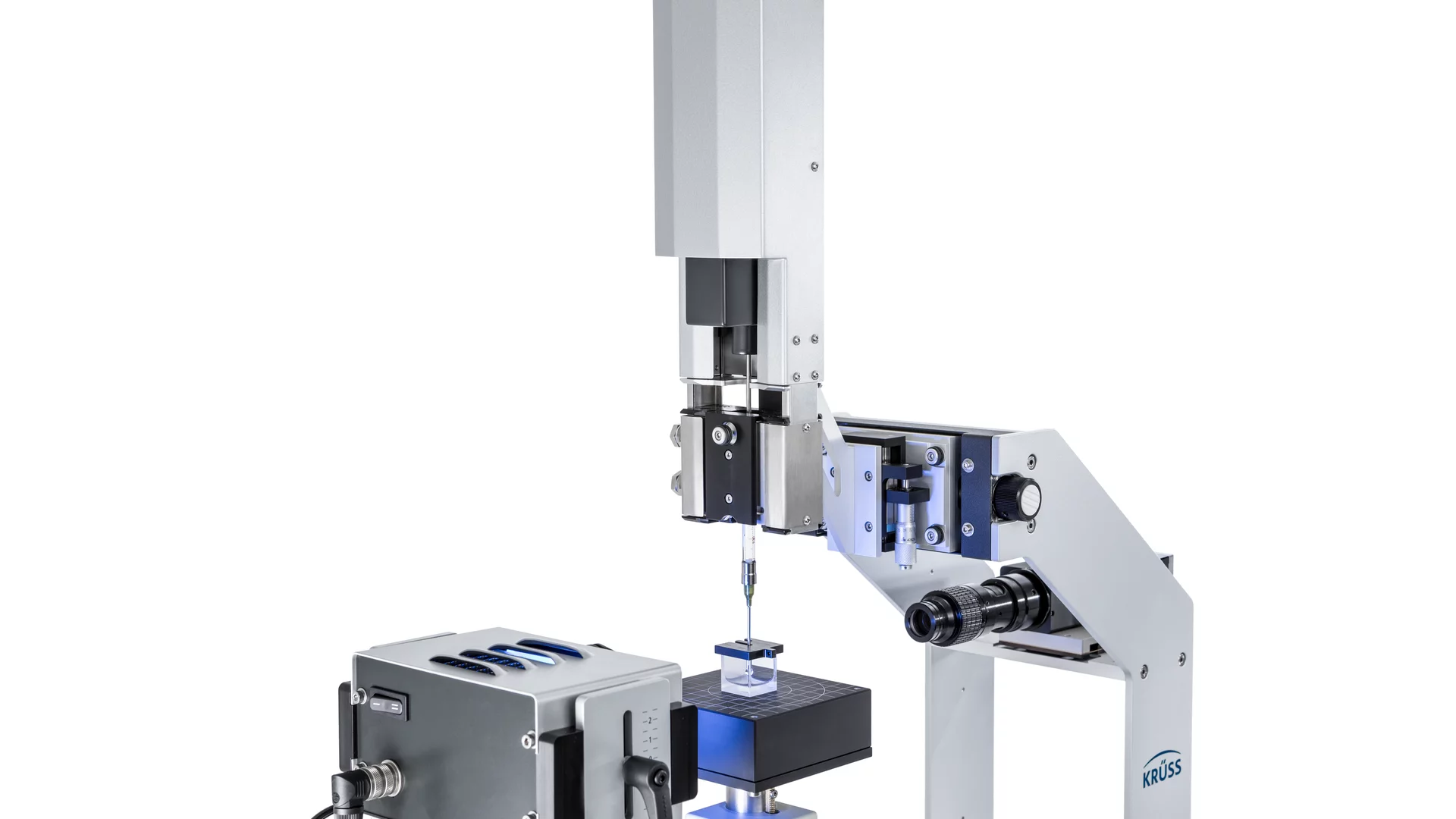

Analysis of elasticity and viscosity within dynamic range
The measurement principle of DSA30R is to measure surface or interfacial tension (SFI/IFT) by evaluating video images of droplets or bubbles on the titration needle. During this process, the interface size varies sinusoidal. SFT/IFT is measured as a function of surface changes, and for samples containing surfactants, SFT/IFT is also sinusoidal.
The piezoelectric drive of the titration device is very precise, capable of generating precise sine waves in the frequency spectrum range of 0.001 to 20Hz, thus the dynamic range of measurement is very wide.
The elastic modulus E 'and viscous modulus E' are evaluated. E 'is closely related to the changes in surface concentration of surfactants caused by stretching and compression; E '' reflects the changes in SFT/IFT over time caused by the diffusion of dissolved surfactants and interfacial adsorption. These two quantities are related to the mechanical stability and time stability of foam and lotion.
Fast, simple, and accurate repeatable measurements
Many innovations around DSA30R have transformed the previously complex interface rheological analysis into a simple and feasible method that can quickly replace samples. With just a few simple steps, the filled glass syringe can be inserted and automatically connected to the injector.
Due to the separation of the reservoir and oscillation drive device, it is easy to clean. It is also suitable for bubble free filling to prevent incorrect results due to unnecessary vibration damping.
The entire measurement process, from droplet generation, oscillation to result output, is fully automatic. Through the easy to create ADVANCE software automation program implementation, programmatic and automated processes also ensure optimal repeatability.
Measure under temperature control
To determine the effect of temperature or to make research on high viscosity systems easier, the syringe is embedded in a temperature controlled sleeve for measurement between -10 and 70 ° C. It is also possible to control the temperature of the surrounding phase. In addition, the beginning of certain processes, such as oscillation, can be automatically associated with the target temperature, ensuring repeatability.




